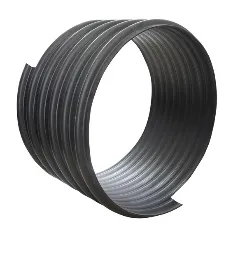Dec . 05, 2024 10:35 Sanawa dolan
Mastering Welding with Specialty Welding Rods: Tips from Experts
Specialty welding rods play a crucial role in achieving high-quality results in challenging welding projects. From precision tasks to heavy-duty applications, choosing the right rod can determine the success of your welds. Among the wide variety available, Welding Rods, Plastic Welding Rods, Simple Welding Rods, CPVC Welding Rods, and PVC Dowel Rods stand out for their specific features and benefits. Here, we explore advanced techniques and expert tips for handling these rods effectively.

The Versatility of Welding Rods in Professional Welding
Welding Rods are a universal solution for connecting metals in construction, repair, and manufacturing. Available in various types such as stick, MIG, and TIG rods, they cater to diverse materials like steel, aluminum, and cast iron.
To maximize efficiency, always select a rod with the correct flux coating and diameter for your project. For example, thin rods work well for intricate joints, while thicker rods excel in heavy-duty tasks. Ensuring proper storage to prevent moisture absorption helps maintain their performance. Skilled welders recommend preheating thick metal parts to reduce the risk of cracking and to improve rod penetration.
Achieving Precision with Plastic Welding Rods
When it comes to fabricating or repairing plastic materials, Plastic Welding Rods are indispensable. Used in industries like automotive, plumbing, and packaging, these rods create durable seals in thermoplastics such as polyethylene, polypropylene, and PVC.
Effective use of Plastic Welding Rods requires selecting a rod that matches the material being welded. Heat control is critical; overheating can degrade the plastic, while insufficient heat can result in weak bonds. Mastering the technique of tack welding, where the rod is first secured in place, ensures alignment and improves overall stability.
Simplifying Repairs with Simple Welding Rods
Simple Welding Rods are ideal for straightforward repair tasks and general-purpose welding. These rods are user-friendly and can be utilized with basic equipment, making them suitable for both beginners and professionals.
A key advantage of Simple Welding Rods is their adaptability to a wide range of projects. They are commonly used for repairing fences, constructing frames, and fixing household items. To achieve optimal results, ensure the workpieces are clean and free from rust or contaminants. Proper electrode angles and consistent movement are crucial for smooth, even welds.
Tackling High-Temperature Jobs with CPVC Welding Rods
For applications involving chlorinated polyvinyl chloride (CPVC), CPVC Welding Rods provide a reliable solution. These rods are resistant to high temperatures and chemicals, making them essential in industries like chemical processing, water treatment, and HVAC systems.
Using CPVC Welding Rods requires a precise balance of temperature and pressure to avoid material deformation. Welding in a well-ventilated area is crucial to prevent exposure to fumes generated during the process. To ensure durability, apply multiple layers of weld where necessary and test the joints for leaks or weaknesses.
Enhancing Structural Integrity with PVC Dowel Rods
PVC Dowel Rods are primarily used for creating strong, stable frameworks in both temporary and permanent structures. Their lightweight yet sturdy nature makes them a preferred choice in furniture manufacturing, signage, and DIY projects.
For effective application, measure and cut PVC Dowel Rods accurately to fit the design. Sanding the ends before joining improves adhesion and reduces gaps. Adhesive welding or solvent bonding techniques can be employed to secure the rods firmly. For large-scale projects, consider reinforcing the joints with additional material to increase load capacity.
Mastering the use of specialty welding rods requires a combination of the right tools, proper technique, and knowledge of material properties. These rods cater to specific needs, offering solutions for everything from general repairs to industrial-grade projects. By understanding the unique characteristics of each type of rod and following expert tips, welders can achieve strong, durable, and aesthetically pleasing results. Investing time in skill development and material knowledge ensures that every weld meets the highest standards of quality and reliability.
-
Welding Rods: The Backbone of Plastic Welding Applications
HabarlarJun.06,2025
-
PVC Sheet: A Versatile Material for Modern Construction and Design
HabarlarJun.06,2025
-
PVC Rod: A Reliable and Versatile Material for Industrial Applications
HabarlarJun.06,2025
-
Pipe Fittings: Essential Components for Secure and Efficient Plumbing Systems
HabarlarJun.06,2025
-
HDPE Sheet: Durable, Versatile, and Eco-Friendly Plastic for All Applications
HabarlarJun.06,2025
-
HDPE Pipe Solutions: Durable, Versatile, and Built to Last
HabarlarJun.06,2025

